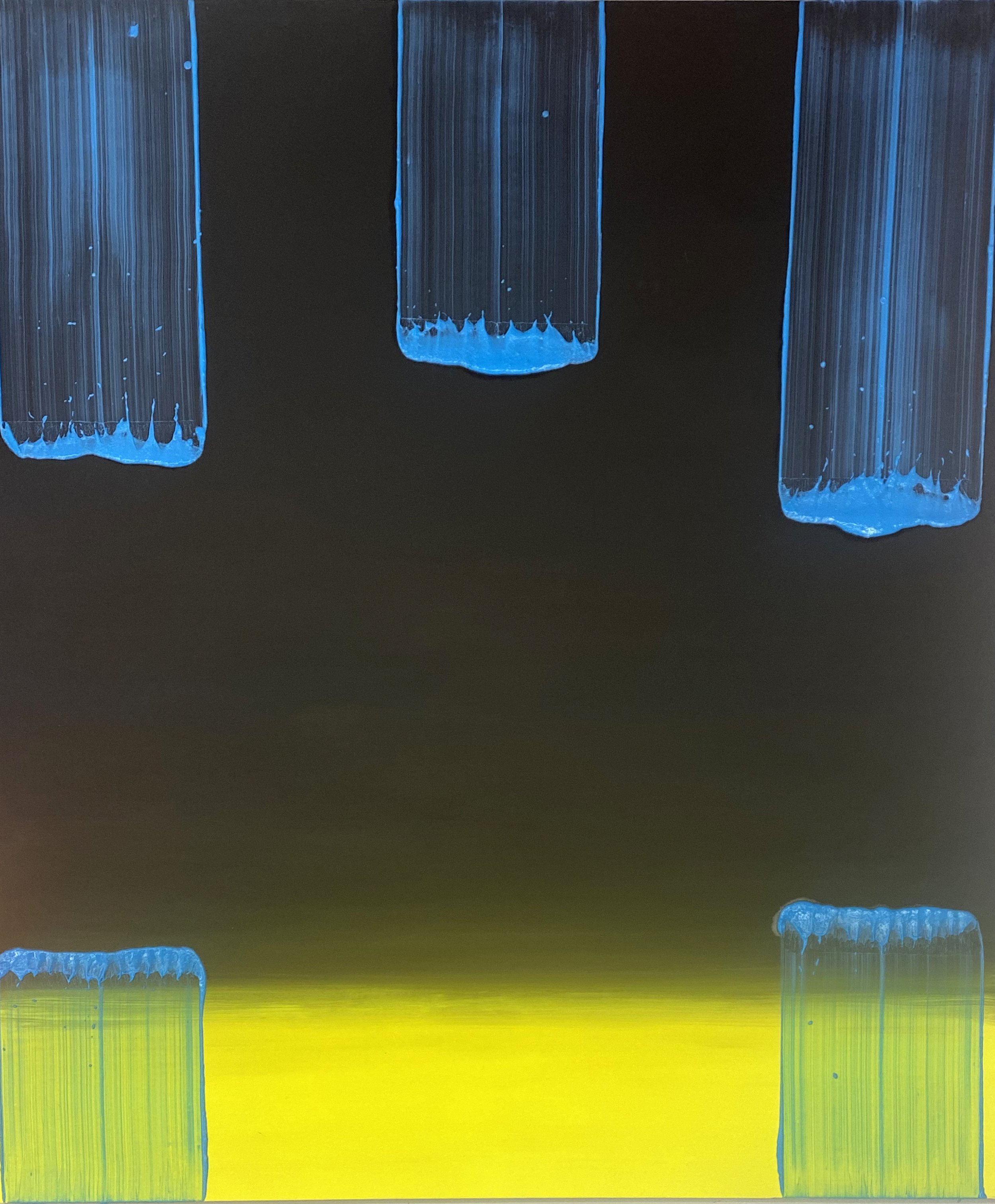WADSTRÖM TÖNNHEIM GALLERY
MALMÖ, SWEDEN / MARBELLA, SPAIN
WADSTRÖM TÖNNHEIM GALLERY
Wadström Tönnheim Gallery’s mission is to examine the idea of the painterly, be it also through related media such as photography, sculpture, installations, video and drawing, in order to understand and to promote the direction of painting and its relevance to contemporary visual culture. The Gallery is owned and operated by Mattias Tönnheim and Andreas Åkesson.
At VOLTA New York 2022, Wadström Tönnheim Gallery presents Matias Di Carlo, Daniel Fleur, Torbjörn Johansson, and Henry Swanson.
Daniel Fleur is known for the way he examines the merging of the digital and the physical. By using various combinations of textured brushstrokes, loose washes, distinct graphic lines, and different canvases, the works embody a genre of painting that explores the organization of social space in the digital age. Each painting contains elements of representation and abstraction and resembles both pictorial landscapes and gestural abstractions. Marks swarm and dissolve, spaces grow and collapse, and layers weave and pull apart. These paintings require different types of looking at different moments, and from different vantage points. They remind us that our field of perception is itself fractured and ambivalent.
Torbjörn Johansson's works are based on an exploratory painting and have in exhibitions and public independent works examined the relationship between colour and our sense organs, not only the sense of sight but also tactility and our ability of spatial orientation. Johansson wants to expand our experience of colour as materiality, medium and experience. Here, Torbjörns art is in dialogue with the 1970s Light and Space movement with, among others, James Turell and Robert Irwin.
Torbjörn Johansson
Matias Di Carlo works can best be described as playful minimalism. Having worked through a highly disciplined rigor of maquette making, sketching and understanding the complexities of form and their interaction in relation to the body, he has provoked a visual form of mathematics and has managed to show how it occupies volume in three-dimensional space. While much iron and steel as a material appear at first impenetrable and inert, Di Carlo has mastered, through long periods of alchemic experimentation, to introduce color and warmth to the otherwise stark and uninviting surfaces. The patina that Di Carlo applies to his Corten steel works are as much a reflection of the rustic colors of the landscape of southern Spain as it is a conversation with the material itself, allowing it to speak freely and in constant change. As Matias Di Carlo has set the course to emerge as a contemporary sculptor, he has been able to free himself from the constrains of utility as well as academia to arrive at an intuitive and direct methodology in the creation of emotion through solid form. Di Carlo emerges with a holistic catalogue of thought, which is not only apparent but also physically present in the rigorous forms of his sculptures. As with all things in nature, there are hidden languages and truths. The universe itself begins with a simple instruction and constantly strives towards greater forms of complexity. Looking closely at the sculptures of Matias Di Carlo, one has a sense that many of the shapes and forms have already understood that the whole is always made up of the sum of its parts.
Matias Di Carlo, WTG, 2021, Cast aluminium and brass, 46 cm x 34 cm x 47 cm
Matias Di Carlo, WTG, 2021, Cast aluminium and brass, 30 cm x 50 cm x 55 cm
Daniel Fleur, DEN LJUSNANDE FRAMTIDEN ÄR VÅR, AKRYL PÅ DUK, 200 X 140 CM, 2021
Daniel Fleur, VAD SPELAR DETALJER FÖR ROLL I SLUTET #1, OLJA OCH AKRYL PÅ DUK, 200 X 140 CM, 2021
Daniel Fleur, HÄR OCH NU MEN VART SEN #1, OLJA PÅ DUK, 105 X 65 CM, 2021
Daniel Fleur, HORISONTEN HAR FLYTTAT, OLJA PÅ DUK, 120 X 160 CM, 2021
Daniel Fleur, BERG FAST GRUND, OLJA OCH AKRYL PÅ DUK, 70 X 100 CM, 2021
Torbjörn Johansson
Torbjörn Johansson, 3 Strokes
Torbjörn Johansson
Torbjörn Johansson












